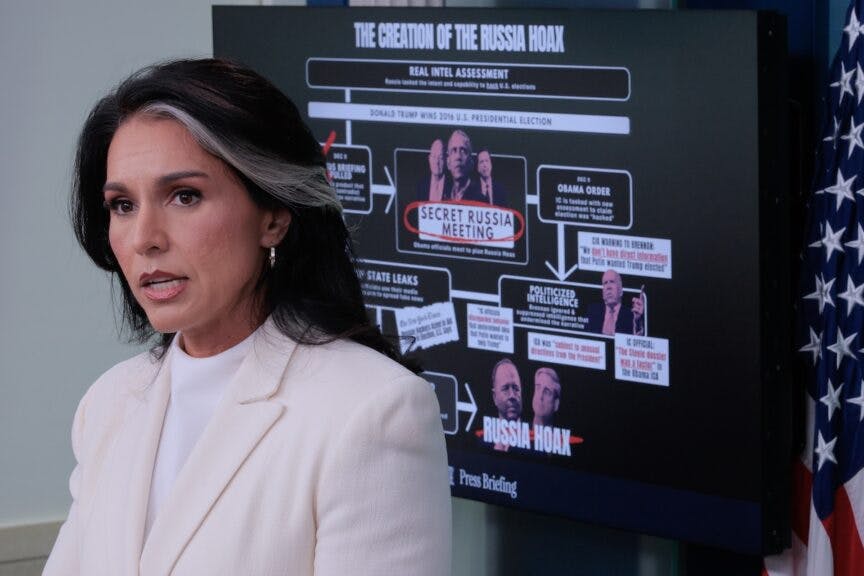Between 1999 and 2005, Lance Armstrong’s cycling performance simply defied belief, with an unprecedented seven consecutive wins of the Tour de France. As writer Xander Lytle stated, “It is hard to exaggerate just how astounding Armstrong’s feats were.” He points out that in its 100+-year history, only four riders had ever achieved as many as five Tour de France victories and only one of them had won those consecutively. Prior to his historic accomplishments, Armstrong was a survivor of testicular cancer — and he touted that experience as giving him the renewed grit, focus, and strength to perform at a higher level.
His skeptics were treated by most media outlets as nasty, unpatriotic, conspiracy nuts who were simply wrong at best and malevolent at worst. Armstrong personally chose the latter tact, labeling his detractors as desperate for attention and money, as being filled with hate, bitterness, and jealousy, by proclaiming investigations of him to be “witch-hunts,” and threatening and filing libel suits. He told some critics that he was sorry for them because they could not “believe in miracles.”
Armstrong’s Livestrong charity also provided a sort of layer of moral protection, buffering against charges of ill will. Most of the media applauded his efforts and ignored and attacked critics — some even contending that attempts to reach the truth were prosecutorial overreach. The Armstrong team often rewarded the supportive media with exclusive interviews and punished critical outlets by denying them access.

Bryn Lennon/Getty Images
But eventually, with pressure mounting from both the incredulity of the performance itself, a detailed report from the U.S. Anti-Doping Agency, and a few dogged media outlets (most notably The Sunday Times and Sports Illustrated), Armstrong finally confessed in a 2013 interview with Oprah Winfrey that he had used banned performance-enhancing drugs, such as erythropoietin, human growth hormones and diuretics for years, including in all seven of his victories. Significantly, his testimony came after the statute of limitations had run on his previous perjured testimony denying such usage.
For a decade-plus, Armstrong had pulled off perhaps the greatest hoax in sports history. His victories and his cancer survivor status was a made-for-Hollywood comeback story that most of the world devoured, making him celebrated, adored, and wealthy — one of which remains true today. Armstrong’s estimated net worth is still around $50m. He is also credited with creating a sort of Dark Age for American cycling from which it still has yet to recover. In a far broader arena, shortly after Donald Trump was elected president in 2016, Americans were subjected to another protracted hoax. It involved a consortium of senior-most Democrat leaders, key governmental agencies, private sector intermediaries, and major media players. The hoax went something like this: Successful billionaire Donald Trump worked closely with Vladimir Putin as a sort of Manchurian candidate aiming to illegally rig the 2016 election which Hillary Clinton had legitimately won. Mr. Trump did all of this chiefly because President Putin was blackmailing him with a secretly recorded raunchy sex tape featuring Russian hookers and Mr. Trump.. President Trump was therefore a treasonous criminal, a Russian asset, pervert, and illegitimate president.
On its face, that narrative was even less believable than one man legitimately winning seven consecutive Tour de France competitions. Nonetheless, that was the story fed to Americans for nearly a decade. Many of the tactics used to promote this hoax were quite similar to those employed by the Armstrong team, only on steroids (pun intended).
In many ways, the Russia hoax was quite successful. At its peak in 2017, some 68% of Americans polled by AP indicated that they were at least moderately concerned that President Trump or his campaign associates had ties to Russia. That narrative helped hobble the Trump presidency for most of his term and made it nearly impossible for him to have a productive relationship with Russia and Vladimir Putin. Additionally, it surely had a significant but immeasurable impact on the 2020 election.
Even prior to the recent revelations of Director of National Intelligence Tulsi Gabbard and FBI Director Kash Patel, the Russia Hoax was beginning to unwind from the gradual exposure of the truth — the Hillary Clinton campaign sponsorship of the now debunked “Steele Dossier,” the lack of evidence in the much anticipated Mueller Report, and the Durham Report which concluded that there never should have been a Trump/Russia collusion investigation.

Photo by Chip Somodevilla/Getty Images
However, the new revelations from Gabbard and Patel — most significantly, the newly declassified and previously unreleased report from the House Permanent Select Committee on Intelligence (HPSCI) — solidifies the deserved descriptor of “hoax” in “Russia Hoax.” They allege that President Obama directed top intelligence officials — James Clapper, John Brennan, and James Comey — to fabricate the January 2017 Intelligence Community Assessment (ICA) concluding that Russia favored Trump in the 2016 election. They further contend that internal emails demonstrate that officials pressured analysts to adjust their original conclusions — which countered their preferred conclusion — and support the claim that Trump had worked in concert with the Russians, despite the lack of sufficient evidence to support that. “Creating this piece of manufactured intelligence… contradicted every other assessment,” Gabbard told Fox News’ Maria Bartiromo. According to Gabbard, so began a years-long coup to stifle and hopefully overthrow Trump’s presidency.
Kash Patel also revealed the discovery of “burn bags” and hard drives of evidence dating back to the early days of the FBI’s Crossfire Hurricane investigation. He claims it contains a 29-page annex to the Durham Report which had never been publicly disclosed and includes intelligence suggesting foreign sources warned U.S. officials that the FBI was preparing to spread disinformation implicating Trump’s campaign. Director Patel contends that FBI leaders James Comey, Andrew McCabe, and Peter Strzok all played roles in attempting to conceal or destroy evidence related to the Russia probe.
In both of these protracted hoaxes Americans were asked to believe outlandish tales — with those most wanting to believe the narratives most likely to embrace them — whether that was adulation of a cancer survivor whose extraordinary will power and physical strength helped propel him to super-human outcomes, or whether it was demonization of an evil, traitorous, Machiavellian candidate who would use any means necessary to win an election and preserve his reputation.
In both hoaxes the media played a central role in perpetuating the frauds through their blind allegiance to one narrative and abandonment of basic investigative journalism, and use of their outlets for relentless and pervasive repetition of false narratives.
In both cases the same sources that actively worked to perpetrate the hoaxes worked to ignore any new evidence discrediting them — in the latter case calling Gabbard’s and Patel’s revelations an attempt at “distraction.”
In both hoaxes, disbelievers received an assortment of labels — “jealous losers,” “unpatriotic conspiracy theorists,” “fascist sympathizers,” “deplorables,” and far worse. In fact, we now know that in both hoaxes whistleblowers received backlash, and were threatened and silenced, and supporters were rewarded. With the Russia Hoax, skeptics were denigrated by governmental leaders and media alike. And in both hoaxes the statute of limitations protected apparently guilty parties — testimony to the longevity of the campaigns and coverup.
In both hoaxes the damage was more extensive than we are likely able to ever measure — involving massive erosion of trust in a host of institutions — athletics in general, charities, intelligence agencies, government, international relations, and media.
Of course, there were some major differences between the two hoaxes. The first was simply scope. One of the hoaxes was primarily confined to the world of athletics, involving a relatively small number of people from the Armstrong camp in concert with ongoing albeit likely unwitting help from the media. The other involved the sanctity of our very Republic with willing participation across a wide spectrum of institutions — the Democrat party leadership, multiple governmental agencies and their leaders — perhaps including the sitting president of the United States, and top legacy and independent media agencies around the world.
A second difference was in the purpose of each hoax. One was perpetrated to falsely elevate, enrich, and celebrate a fraudster, while the other was designed for precisely the opposite reason — to smear and denigrate a legitimate and successful president. One was created to conceal a truth — unfair and illegal doping, while the other was created in an attempt to establish a falsehood as truth — Trump/Russian collusion. In Armstrong’s case, the hoax was dependent on hiding key evidence (presence of drugs). While some hiding of evidence was also true in the Russia Hoax — with plenty of exculpatory evidence being buried or ignored — the primary focus was on fabricating supportive evidence. Further, the fabricated evidence became the predicate for additional falsehoods and illegal actions — such as wiretapping the Trump campaign.
Mark Twain once observed that, “It’s easier to fool people than to convince them that they have been fooled.” Indeed, un-ringing the Russia Hoax bell may well prove to be a Herculean task. That false narrative was promoted so authoritatively, so thoroughly, so pervasively, and for so long that many people and media outlets will find it difficult to accept the truth — especially those who may have received prestigious awards for their false coverage of the story.
CNN, MSNBC, The New York Times, and The Washington Post published thousands of stories referencing Trump and Russia during the peak of the hoax. At the height of the investigation, some networks ran multiple segments per day focused on potential collusion, often leading with it in prime-time programming. In a peer-reviewed study published in Journalism titled “A catastrophic media failure? Russiagate, Trump and the illusion of truth: The dangers of innuendo and narrative repetition,” the authors call the coverage a “catastrophic media failure,” emphasizing the Illusory Truth Effect — where repetition of unverified claims led audiences to believe them as fact.
The truth has reason for hope. A new Rasmussen poll shows that the percentage of Americans who believe that President Trump’s 2016 campaign likely colluded with Russia is now down to 42% with most of those being Democrats — but that is still a big number. As the evidence continues to mount, that number will almost certainly continue to shrink — and who knows; if we get an Armstrong-Oprah-type moment with full confessions, it may actually plummet.
* * *
Greg Salsbury, Ph.D. is former president of Western Colorado University and Board of Advisor member for STARRS.US.
The views expressed in this piece are those of the author and do not necessarily represent those of The Daily Wire.

Continue reading this exclusive article and join the conversation, plus watch free videos on DW+
Already a member?

.png)
.png)

